- 26 Jul 2023
- 4 Minutes to read
- Print
- DarkLight
- PDF
Order Statuses
- Updated on 26 Jul 2023
- 4 Minutes to read
- Print
- DarkLight
- PDF
Most order statuses are applied due to store user or customer action, but some must be manually changed. Order statuses can help you decide what actions to be taken for a particular order, such as whether the order needs to be packaged or shipped.
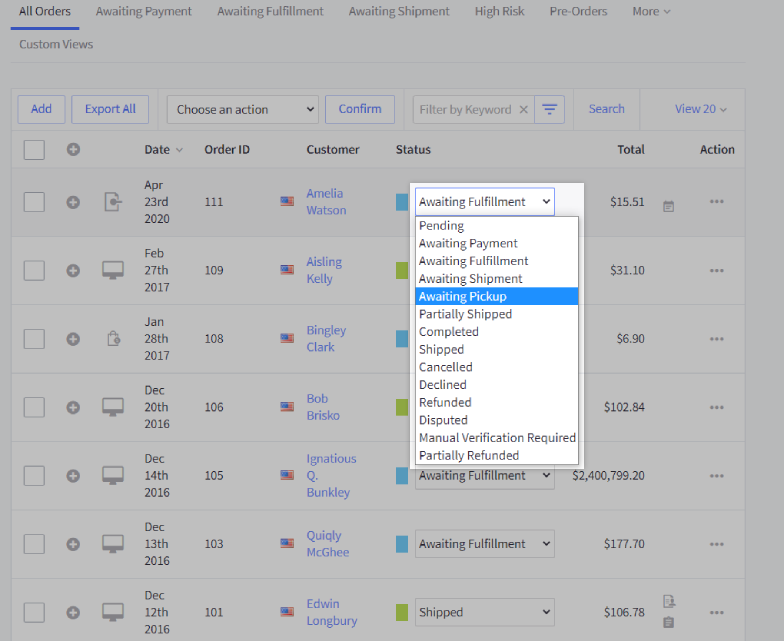
The default order view lets you quickly and easily find orders you're looking for based on a specific order status, such as Awaiting Shipment, Awaiting Payment, and more. This helps you fulfill orders and communicate with your customers promptly, leading to higher satisfaction and return business.
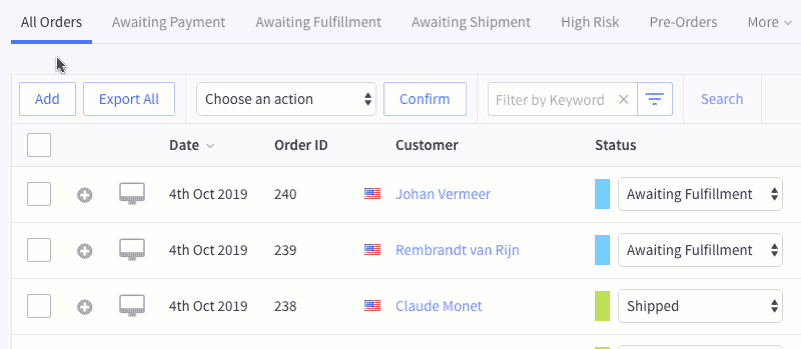
Order Statuses (List)
Here is the list of the built-in order statuses that can be applied to orders. All new orders that have been paid for will have a status of "Awaiting Fulfillment" (physical products) or "Completed" (digital products), but this can vary based on the payment gateway and method used.
Pre-orders (which can also be used for back orders) use the statuses listed here to represent if the order is pending, awaiting Payment, or awaiting Fulfillment. You can access your pre-orders from the View Orders screen.
- Pending — The customer started the checkout process but did not complete it. Incomplete orders are assigned a "Pending" status and can be found under the More tab in the View Orders screen.
- Awaiting Payment — The customer has completed the checkout process but has yet to be confirmed. Authorize only transactions that are not yet captured have this status.
- Awaiting Fulfillment — The customer has completed the checkout process and confirmed payment.
- Awaiting Shipment — The order has been pulled and packaged and awaits collection from a shipping provider.
- Awaiting Pickup — The order has been packaged and is awaiting customer pickup from a seller-specified location.
- Partially Shipped — Only some items in the order have been shipped.
- Completed — The order has been shipped/picked up, and the receipt is confirmed; the client has paid for their digital product, and their file(s) are available for download.
- Shipped — The order has been shipped, but the receipt has not been confirmed; the seller has used the Ship Items action. A listing of all orders with a "Shipped" status can be found under the More tab of the View Orders screen.
- Canceled — Seller has canceled an order due to stock inconsistency or other reasons. Stock levels will automatically update depending on your Inventory Settings. Canceling an order will not refund the order. This status is triggered automatically when an order using an authorize-only payment gateway is voided in the control panel before capturing Payment.
- Declined — Seller has marked the order as declined.
- Refunded — Seller has used the Refund action to refund the whole order. A listing of all orders with a "Refunded" status can be found under the More tab of the View Orders screen.
- Disputed — The customer has initiated a dispute resolution process for the PayPal transaction that paid for the order, or the seller has marked the order as fraudulent.
- Manual Verification Required — Order on hold while some aspect, such as tax-exempt documentation, is manually confirmed. Orders with this status must be updated manually. Capturing funds or other order actions will not automatically update the status of an order marked Manual Verification Required.
- Partially Refunded — Seller has partially refunded the order.
Changing an Order Status
Some order statuses are applied when a particular control panel action is performed, while others must be manually applied. For example, shipping items will change an order's status to Shipped, whereas a Cancelled or Declined order status has to be manually applied.
To manually change the order status, select it from the Order Status drop-down on Orders › View.
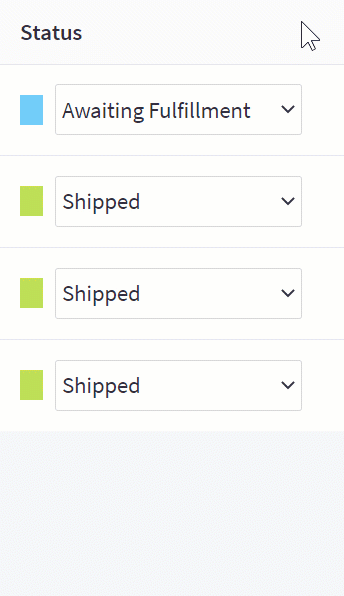
When an order's status changes, an email can automatically be sent to the customer to notify them. You can select which statuses trigger these emails under Settings › Order notifications.
Order Status Workflow
Below is an example of an order status workflow to provide insight into how statuses may be used in the fulfillment process. Every business is unique, and the best practices for one may not be ideal for another. Experiment with your workflow and see what best works for you.
1. You receive notification of a new order.
2. Checking your orders screen, you see a new order with Awaiting Fulfillment status, which indicates the order is paid and ready for you to pull.
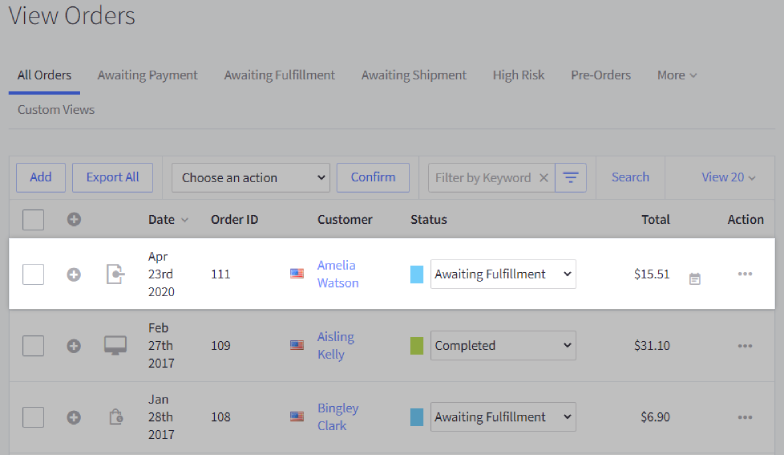
3. You package the order and purchase the appropriate shipping label. You take the package to a shipping provider or schedule a pickup. In either case, you manually update the status to Awaiting Shipment, which indicates the order is ready to leave your point of origin.
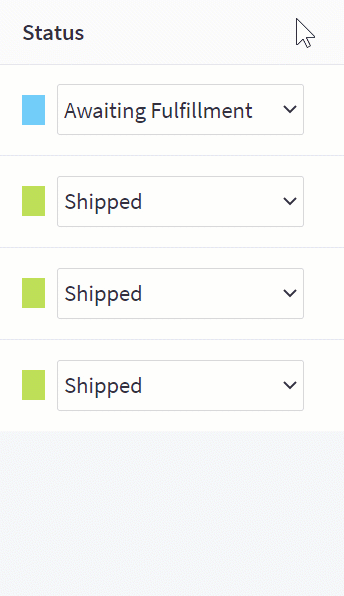
4. Once in the hands of the shipping provider, you go to Orders › View and use the Ship Items action. You can select Ship Items from the action menu or click the button in the image below while viewing the order details. This updates the order status to Shipped, indicating it has left its point of origin.
5. As a best practice, you will want to confirm receipt by the customer via the tracking number or other methods. Once confirmed, you can manually update the order status to Complete. Your workflow may differ depending on your business type and the orders your store receives.
Status Change Notifications
You can select which order statuses trigger an email notification to your customers by editing your order notification settings. This is in addition to the Order email (the Invoice email), which is sent automatically. In the control panel, you can customize the email templates for the order confirmation and status update messages from Marketing › Transactional Emails.
Order status notifications are universal and apply to all customers. For example, you can't specify that a particular customer group doesn't get a particular status notification. Note that customized order statuses will be reflected in email notifications sent from your store.


